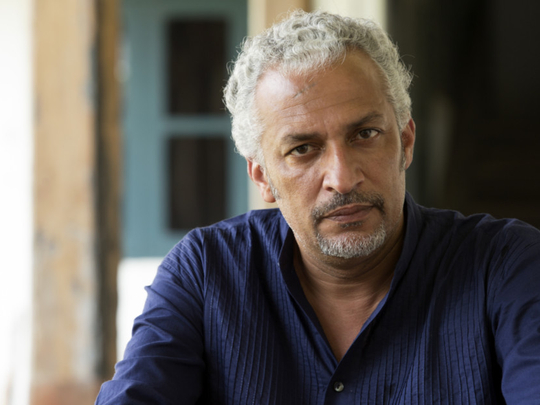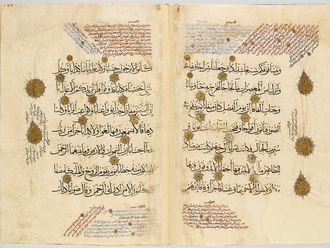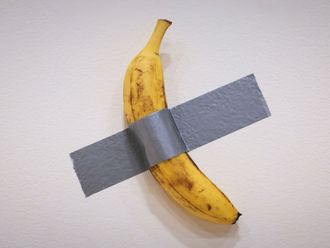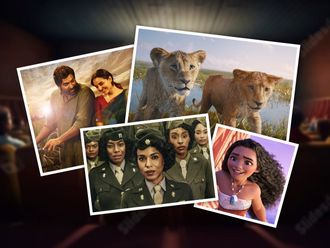
Mohammed Kazem is recognised as one of the UAE’s leading contemporary artists. Born in Dubai in 1969, he studied painting at the Emirates Fine Arts Society, Sharjah, and did his master’s in fine art at the University of the Arts, Philadelphia in 2012. He developed his conceptual practice under the mentorship of the late Hassan Sharif and taught at The Dubai Atelier founded by Sharif becoming a mentor to the next generation of Emirati artists. He is part of a group of Emirati artists known as ‘the five’ who pioneered contemporary conceptual experimentation in the UAE. His work is in the permanent collections of museums around the world and has been exhibited at prestigious international venues and events, including the Venice Biennale where he represented his country as the sole artist at the UAE’s National Pavilion in 2013.
Throughout his career, Kazem has been interested in finding new ways to depict things that are difficult to express visually, and exploring, measuring, mapping and navigating the changes happening in the UAE and around the globe.
He used scratches on white paper to visualise sound and movement; he has used drawing and photography to depict what he sees around him; and he combined performance with photography and installation to document the daily routine of his job in a UAE army office. He has experimented with video and GPS coordinates to find his place in the rapidly changing landscape of the UAE, and to create immersive installations that invite viewers to contemplate their own position in a turbulent, changing world. But for his latest show in Dubai, titled A Prime Activity, the artist has returned to painting after more than two decades. The exhibition includes Kazem’s paintings from the 1990s as well as new works created especially for the show.
Kazem spoke to the Weekend Review about his artistic journey and the evolution of his ‘anti-style’.
Excerpts:
Why did you include your early paintings in this show?
I work with various new media now, but I trained as a painter. For the first decade of my career I was focused on painting and won many prizes at Youth Biennials and the GCC Young Artist Competition. These watercolour and acrylic paintings from the 1990s have never been exhibited before. They depict our studio at The Dubai Atelier in different palettes and styles indicating the huge influence of European movements such as impressionism, post impressionism, expressionism, fauvism and cubism on my work. They are relevant to this show because I am returning to painting after a long time, but it was the grounding in conventional media and contemporary art movements that gave me the tools to experiment with new ways of expressing myself. My choice of medium has always been dictated by the concept — and ranges from chewing gum to the colourful textiles I found in Indian markets during a residency in Bihar. That is why I describe my style as ‘anti-style’ because it is consistent only in my way of thinking.
Why did you choose the same title as an earlier series for the new body of work called Neighbours?
My earlier series from 2006 featured photographs of everyday scenes outside my window that spoke about my neighbours through the traces of their lives such as their laundry hanging on a clothesline set against a pristine blue sky. In the new series I have looked at the brightly-coloured walls in my neighbourhood, focusing on the meeting lines of the walls and the blue sky above. I began by creating acrylic paintings on canvas board which look like abstract compositions. I then learnt the decorative painting techniques used by wall painters and created another series of sculptural works on MDF boards where I have recreated the actual colours, designs and textures of the walls. Each wall is different and tells us something about the people who live behind it.
These paintings speak about how times have changed. Although Dubai and its population has grown, the communication between people has reduced and neighbours are separated by walls. Another layer in the narrative is that the workers who construct and paint these walls never get the opportunity to live in the homes beyond the walls. The blue sky in every painting symbolises the fact that despite the walls and the differences in our backgrounds we all live under the same sky.
I continued this series with a set of watercolour paintings depicting ordinary people on the streets of Dubai. While the other paintings in this series feature walls and no people this one focuses only on the tiny, colourful figures painted on a pure white background.
These are everyday scenes of people waiting for a bus, crossing the road or chatting on the footpath that I capture on my camera while walking or driving in the city. Amidst the hustle and bustle of city life and landscape of towering buildings most of us do not notice the ordinary people on the streets. These paintings are about my changing surroundings and my movement in the city and the impressionist style links them to my early work and the past.
What is the concept behind the series Even the Shade Does Not Belong to Them?
This series is based on photographs of labourers that I took during the recent construction of my studio and my archive of images built up over the years. The title alludes to the fact that these hard-working men, who build the luxurious apartments we live in, the fancy malls where we shop and the roads we drive on, are an integral part of our lives yet we ignore their existence. They are excluded from the buildings they build, and since I have often seen them resting outdoors in the shade I think of them as building the shade — but even the shade does not belong to them.
I expressed this concept by first making detailed paintings of these men at work and then covering them with ink washes. The canvases appear to be black, but if you look closely you can discern some shadowy figures such as a man on a ladder plastering a wall, or a group of workers resting on the pavement outside a mall. These paintings are metaphors for our blindness and urge us to be aware of our surroundings and to have empathy for those who toil to make our lives better.
Jyoti Kalsi is an arts-enthusiast based in Dubai.
A Prime Activity will run at Gallery Isabelle van den Eynde until November 1.












